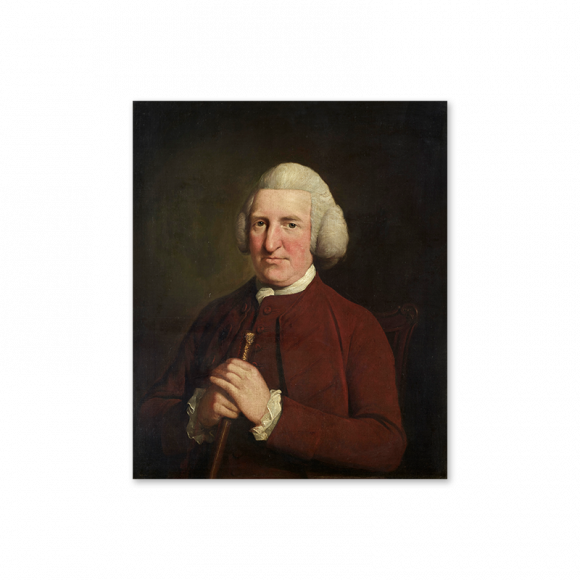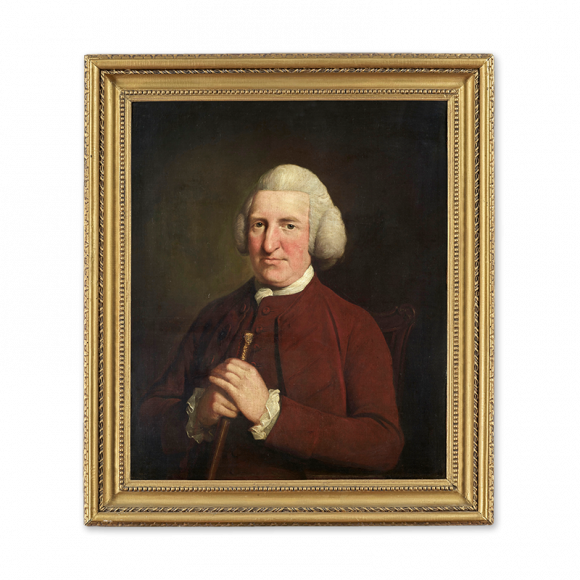Mason Chamberlin came late to art, having started his career in a counting house in the City of London.But he later changed course and went to study art as a pupil under the noted English painter Francis Hayman, R.A. (1708-1776). By the 1760s Chamberlin appears to have developed a solid portrait practice and in 1768 he became one of the founding members of the Royal Academy under the presidency of Sir Joshua Reynolds. He was a faithful exhibitor there, exhibiting some 50 portraits between 1768 and 1786, just before his death.
All of Chamberlin’s Royal Academy exhibits were portraits and sadly for the historian, most of them were exhibited anonymously (Portrait of a Lady, Portrait of a Gentleman etc.). But Chamberlin’s picture of Catherine Macauley was recorded, as were several members of the Bentinck family and the royal children Prince Edward and Princess Augusta. Elsewhere Chamberlin’s exhibits at the Society of Artists and at the Free Society show him to have painted the occasional history painting, too. Studying the lists of his exhibited pictures it is interesting to note that he appears to have been extremely popular among male sitters. Many of these were London city businessmen and presumably these were contacts made when Chamberlin was one of their number himself. By the end of his career, Chamberlin had a substantial following among the city bankers, financiers and lawyers of London and it may well be that we are looking at the face of such a professional man here.
One of Mason Chamberlin’s more interesting portraits is that of the renowned Scottish physician Dr William Hunter. Hunter had been appointed to the position of Professor of Anatomy at the newly founded Royal Academy in 1768. Chamberlin painted Hunter’s portrait that same year and gave it to the Academy; it can be seen in their collection today. But Chamberlin’s best known work must be his portrait of Benjamin Franklin, executed in 1762 and showing the remarkable polymath-statesman surrounded by three of his most famous experiments. That picture is now held in the Philadelphia Museum of Art.
Chamberlin developed a style completely typical of an English portraitist of the second half of the 18th century. While shades of Hayman and the rococo portrait are recognizable in his earliest work, by his maturity he was showing similarity to artists known more for their careful attention to detail and to their accuracy of depiction, solid and accurate rather than flamboyant and suggested. This is what will have brought him the respect of his clientele and in this he can be aligned with William Hoare of Bath, Lemuel Abbott or Joseph Wright of Derby.




